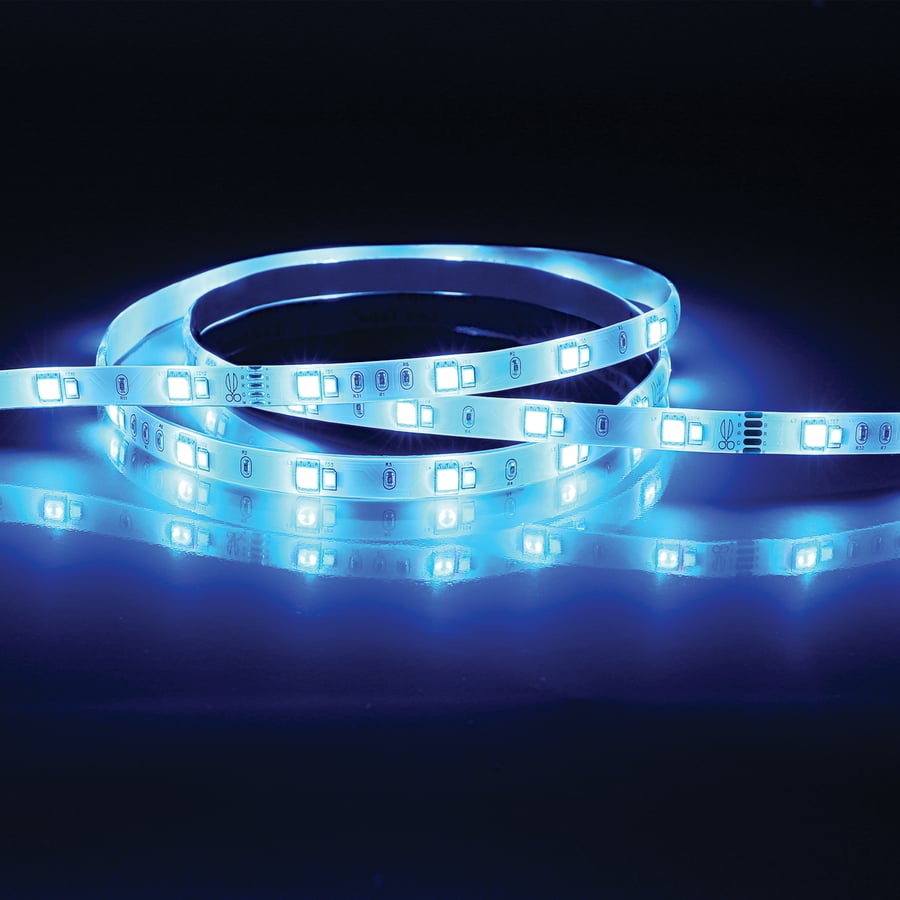While LED lighting has taken off in homes and businesses in the past few years, you most likely have been taking advantage of this lighting technology for decades in everything from televisions to watches to traffic lights to exit signs.
Older lighting technology such as halogen, incandescent and fluorescent lights continue to give way to light-emitting diodes or LEDs, which are brighter, last longer, and are more energy efficient.
“2021 saw progress both in terms of LED deployment and lighting efficiency gains,” reports the International Energy Agency (IEA). “Over 50 percent of buildings sector lighting markets globally are covered by LEDs. While numerous countries began to phase out incandescent lamps more than ten years ago, many are now beginning to eliminate fluorescent lighting to make LEDs the main technology.”
LED Lights: Rapid Deployment Since 2010
The IEA global lighting sales historical infographic shows the meteoric rise of LED lighting market share in the last decade:
- 2013: LED 3 percent
- 2014: LED 7 percent
- 2015: LED 14 percent
- 2016: LED 18 percent
- 2017: LED 24 percent
- 2018: LED 29 percent
- 2019: LED 39 percent
- 2020: LED 51 percent
During that same time frame, incandescent lighting went from the market leader at 53 percent in 2010 to just 4 percent in 2020. Compact fluorescent (28 percent), halogen (11 percent), and linear fluorescent (5 percent).
The IEA goal is 100 percent LED within three years.
“LEDs are shaping current market dynamics. The momentum created by the ongoing phase out of incandescent and halogen lamps as well as declining shares of fluorescent technologies is raising lighting efficiency globally,” says the IEA.
LED Lights: 75 Percent Less Energy, Can Last 25x Longer
The U.S. Department of Energy (DOE) says that residential LEDs use at least 75 percent energy, and last up to 25 times longer than incandescent lighting.
“LED is a highly energy-efficient lighting technology and has the potential to fundamentally change the future of lighting in the United States,” says the DOE.
The DOE describes the differences between LEDs and other types of lighting as:
- Light Source: LEDs are the size of a fleck of pepper and can emit light in a range of colors. A mix of red, green, and blue LEDs is sometimes used to make white light.
- Direction: LEDs emit light in a specific direction, reducing the need for reflectors and diffusers that can trap light. This feature makes LEDs more efficient for many uses such as recessed downlights and task lighting. With other types of lighting, the light must be reflected to the desired direction, and more than half of the light may never leave the fixture.
- Heat: LEDs emit very little heat. In comparison, incandescent bulbs release 90 percent of their energy as heat and CFLs release about 80 percent of their energy as heat.
- Lifetime: LED lighting products typically last much longer than other lighting types. A good quality LED bulb can last 3 to 5 times longer than a CFL and 30 times longer than an incandescent bulb.
Understand the “D” in LED: Diodes
LEDs, according to the Lighting Design Lab, are fundamentally different from conventional light sources such as incandescent, fluorescent, and gas-discharge lamps, in that LEDs use no gas or filament; have no glass bulb; and have no failure-prone moving parts.
As the name suggests, the key to understanding LED lighting is the diode.
“A diode is the simplest sort of semiconductor device,” says How Stuff Works. “Broadly speaking, a semiconductor is a material with a varying ability to conduct electrical current.”
The diode in LEDs restricts the direction of movement of charge carriers, essentially allowing electric current to flow in one direction.
Other advantages of LEDs include:
- Mercury free
- No infrared radiation
- Can operate in cold environments
- Can withstand vibrations and impact
- “Instant on”: reaches full brightness as soon as they are turned on
Historical Timeline of LED Lights
LED Lights may feel like 21st century invention, but the concept has been around for more than 100 years.
Here’s a timeline of the History of LED Lighting:
- 1907: British engineer and early radio pioneer, Captain Henry Joseph Round, publishes in Electrical World his discovery of the phenomena of electroluminescence in which a material emits light in response to a passage of an electrical current.
- 1924-1941: Russian scientist and inventor, Oleg Vladimirovich Losev, published a series of articles on the theory of how LED lighting could work and possible applications.
- 1955: American physicist, Rubin Braunstein, publishes the first measurements of infrared emissions by diodes made from crystals of gallium arsenide (GaAs), gallium antimonide (GaSb) and indium phosphate (InP).
- 1961: Robert Biard and Gary Pittman team up at Texas Instruments to produce and patent the first infrared LED.
- 1962: Nick Holonyak invented the first LED to emit visible red light while working at a General Electric research lab.
- 1964: IBM introduces red LEDs to their computer circuit boards.
- 1968: Hewlett Packard integrates LEDs into their handheld calculators.
- 1972: Monsanto electrical engineer, M. George Craford, invents the first yellow LED (using one red and one green chip) as well as red and orange LEDs 10 times brighter than Holonyak’s earlier versions.
- 1976: Thomas P. Pearsall developed the first high-brightness and high-efficiency LEDs for optical fiber telecommunications.
- 1993: Shuki Nakamura makes the first high brightness blue LED using Gallium Nitride (InGaN).
“The advent of blue LEDs enabled the creation of what we now see commonly throughout the world: white LEDs, of which there are two types. The first mixes blue LEDs with a yellow fluorescent substance to create a white emission, while the second combines blue, red, and green. Either way, LEDs that emit a white light would not exist today without the hard-earned creation of the blue,” says Embedded Computing Design.
- 2002 white LEDs are commercially available but at a high price tag (between $80 and $100 per bulb)
- 2006: LEDs with 100 lumens per watt are produced for the first time.
- 2007: PWM becomes the first manufacturer to develop standard surface-mounted device (SMD) LED digits for fuel station price signs.
- 2010: LEDS with 250 lumens per watt are produced.
- 2011: Phillips wins the L Prize for energy efficient lighting from the Department of Energy (and $10 million cash award) for producing a LED bulb that generates as much light as a 60-watt incandescent at 900 lumens but consumes less than 10 watts with a life rated at over 25,000 hours.
- 2014: The Nobel Prize in Physics is awarded to Nakamura, Isamu Akasaki, and Hiroshi Amano for their work on blue LEDs, which helped lead to today’s advances.
- 2015: PWM launches the first full-color price sign digits with a combination of red-green-blue (RGB) within an individual LED allowing for millions of colors to be mixed.
Since then, LED lighting technology is continuing to improve as it lights up the world.







